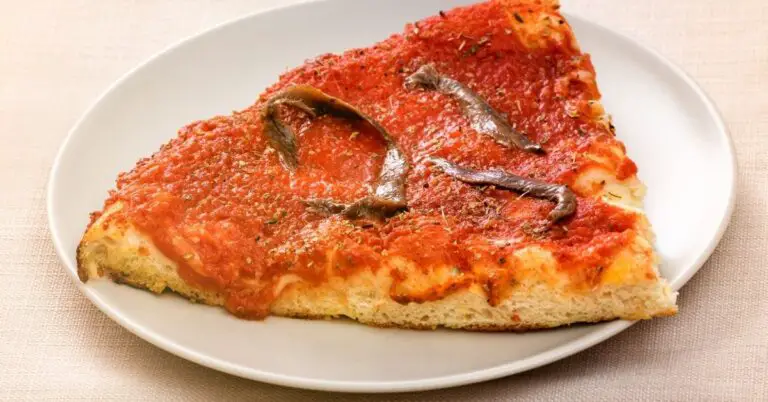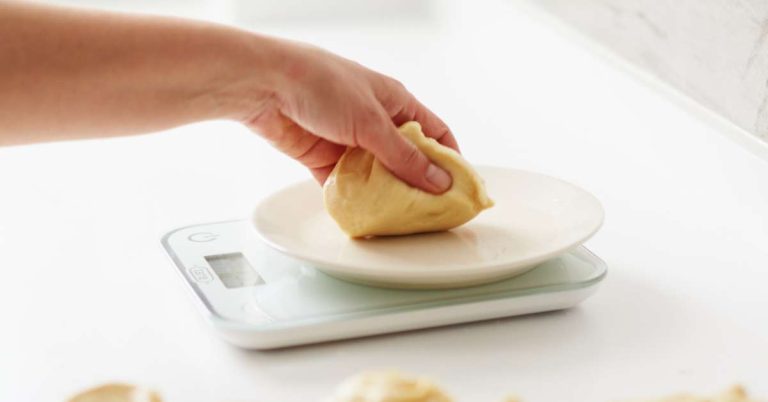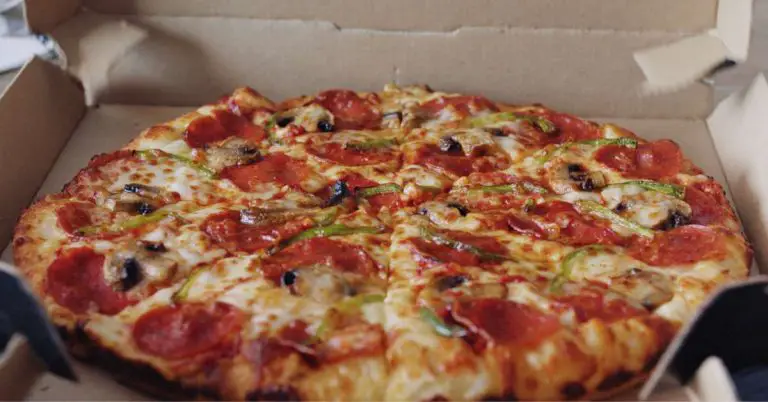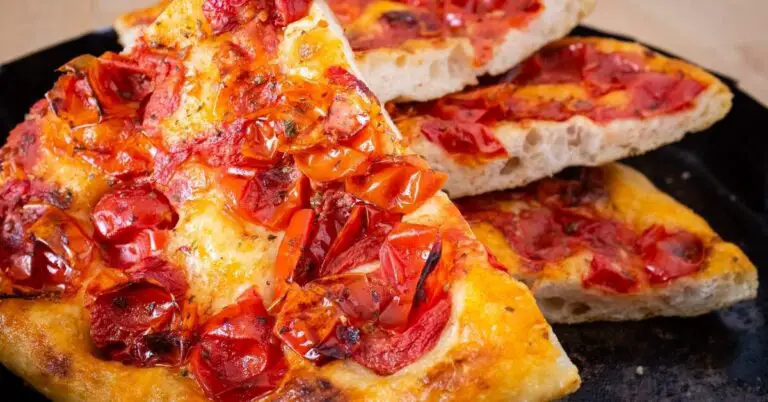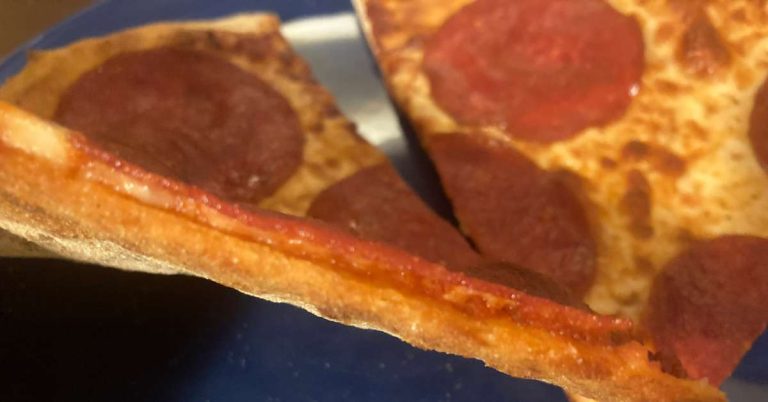Is Pizza Healthy? The Surprising Health Benefits Of Pizza
It seems to be a fact of life that everything delicious is bad for us. So the same’s has to be true for pizza, right? Not necessarily—the health benefits of pizza come down to what kind of pizza it is and how much of it you eat.
A pizza with simple, clean ingredients is packed with nutrients and can easily be made part of a healthy and balanced diet. On the other hand, American style fast-food pizza, loaded with highly processed toppings and preservatives, comes with few nutritional benefits, possibly leading to health problems down the road. Like everything else in life, moderation is key, as well as being aware of what ingredients are being used in your favorite pizza.
In other words, pizza can be incredibly healthy or incredibly unhealthy—it all depends on how you eat it. Let’s clear some of the confusion so you know which pizza to seek out and which to avoid.
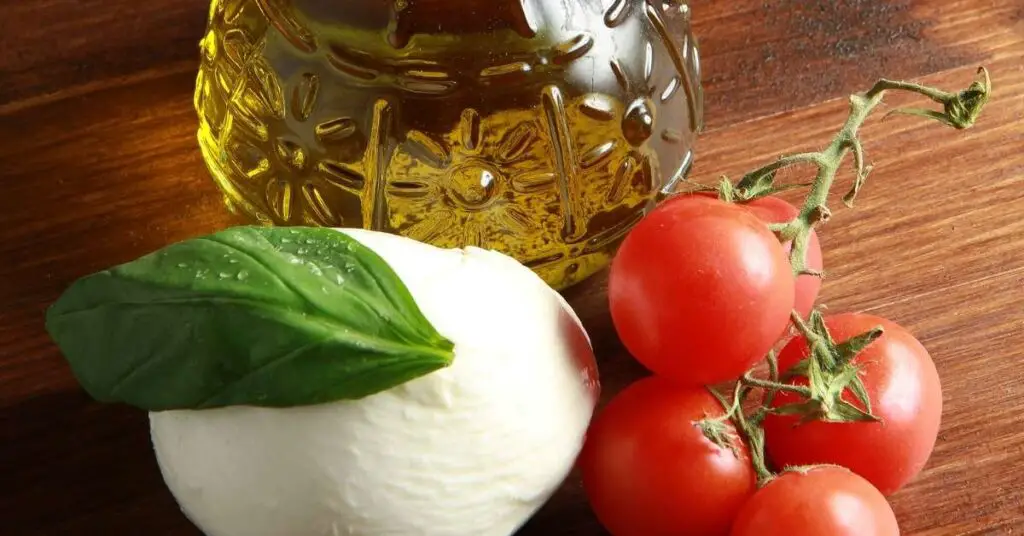
Pizza Can Be Unhealthy, But It Doesn’t Have To Be
The vast majority of fast-food and frozen pizzas are decidedly unhealthy, especially when loaded with all kinds of processed meats and other toppings. It doesn’t help that this type of pizza tends to come in oversized portions, either.
This shouldn’t be a surprise to anyone, as we know how damaging the average western diet (characterized by huge amounts of saturated fats and carbohydrates) can be to our bodies (source).
Even on an instinctive level we know how unhealthy pizza can be, simply based on how bad we feel the day after eating too much from one of the major American pizza chains (you know the ones).
The Best Pizza Is The Healthiest
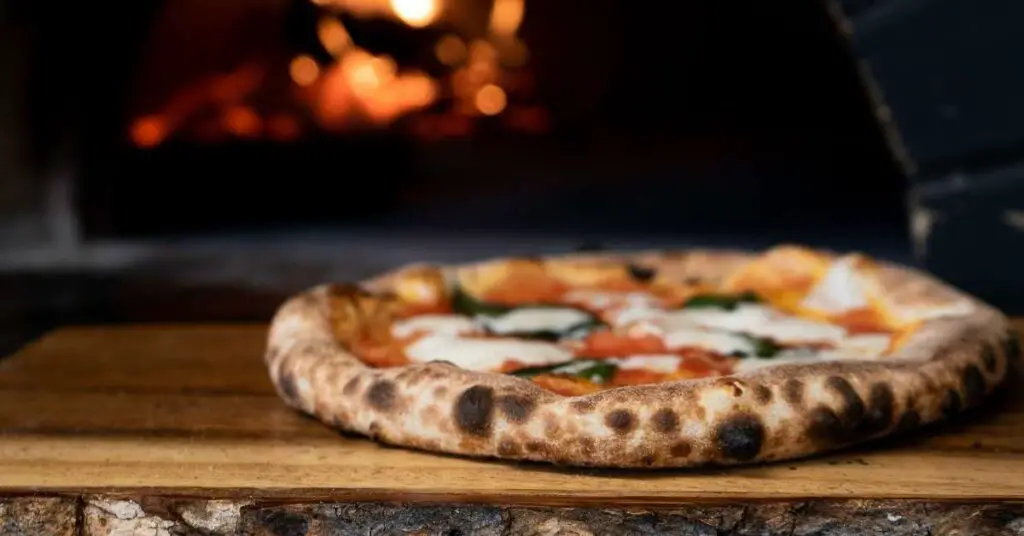
Fortunately, some of the best pizza in the world also happens to be the healthiest, whether you get it from a pizzeria or make it yourself at home. By this, I’m referring to my personal all-time favorite style of pizza—Neapolitan.
Neapolitan style pizza is probably the simplest of all pizza styles, made using a small portion of fermented dough and just a few unprocessed toppings like fresh mozzarella and organic tomatoes.
Of course, pizza doesn’t have to be Neapolitan style to be healthy. In fact, many pizzerias in the US sell reasonably portioned pizzas made with simple, nutritious ingredients as well. But beware, as most local pizzerias in the US make pizza that is equally unhealthy as the major chains.
Americans Prefer Unhealthy Pizza
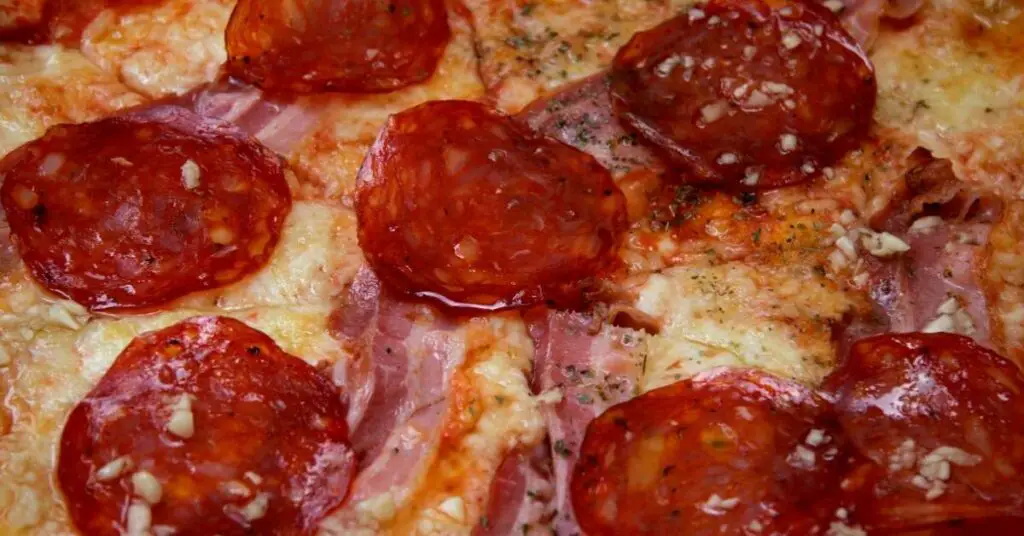
The reason for this comes down to personal taste in most cases, and in the US people tend to favor pizza with a thick crust, lots of toppings, and intense flavors. Unfortunately, this usually means lots of salt, sugar, and preservatives—not to mention loads of excess carbohydrates.
So really, the secret to healthy pizza is being selective about where you get pizza from, or opting to make your own at home with simple healthy ingredients.
For example, my poolish pizza dough recipe contains no additives and is fermented for at least 24 hours before baking, making it incredibly easy to digest. Topped with fresh mozzarella, a simple tomato sauce, and some fresh herbs, this pizza is incredibly nutritious—even if you eat the whole thing yourself.
Alternatively, if you don’t feel like cooking, seek out your local Neapolitan pizzeria. If you don’t have any Neapolitan pizza near you, look for any pizzeria selling “wood fired” pizza, as these places often take great care to serve a quality product.
Also, try to stick with just a few healthy toppings rather than loading on as many as you can fit.
Healthy vs Unhealthy Pizza
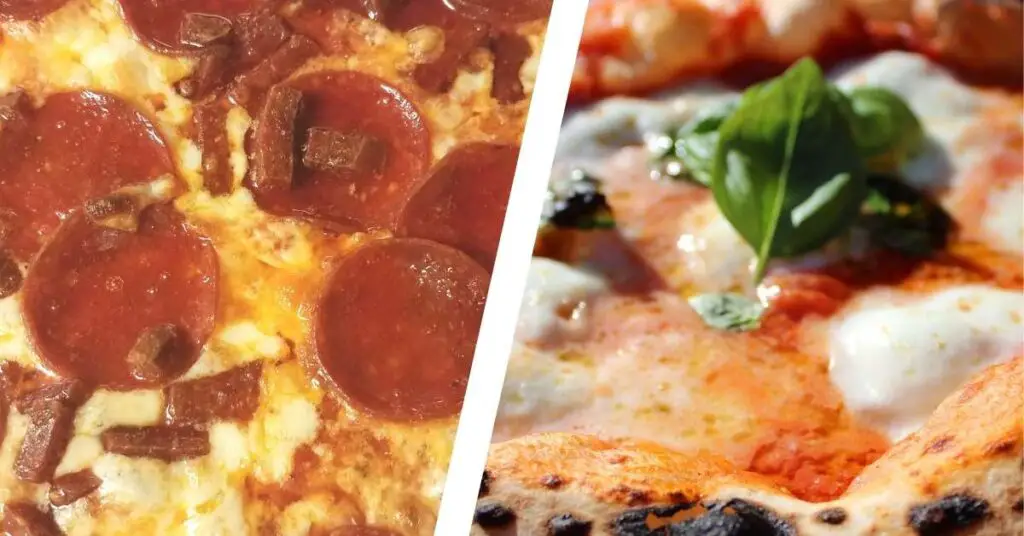
If you’ve never had a Neapolitan pizza, let me explain how they’re made so you can appreciate the health benefits for yourself.
Neapolitan pizzas are made with simple, fresh, and wholesome ingredients. In most cases that includes: water, flour, yeast, salt, honey, olive oil, fresh tomatoes, fresh mozzarella, fresh pecorino cheese, and fresh basil. That’s it… for the entire pizza.
By contrast, look at this ingredients list for a Domino’s deep dish pizza crust (source):
Enriched Flour (Wheat Flour, Niacin, Iron, Thiamine Mononitrate, Riboflavin Folic Acid), Water, Malt, Sugar, Whey, Malted Barley Flour, Yeast, Soybean Oil. Zzesty Blend: Butter Flavored Oil (Partially Hydrogenated Soybean Oil, Soy
Lecithin, Artificial And Natural Butter Flavoring, Vitamin A Palmitate And Beta Carotene for Color), Imitation Parmesan Cheese (Water, Modified Food Starch, Casein And Or Caseinate, Partially Hydrogenated Soybean Oil, Cellulose
Powder, Salt, Sodium Phosphates, Stabilizers [Mono And Diglycerides, Guar Gum, Carrageenan], Natural Flavor, Lactic Acid, Sorbic Acid [As A Preservative]), Onion And Garlic, Spices, Salt, Lactic Acid, Butter Flavor, Tomato Powder, Bell Pepper. Dextrose, Citric Acid, Extractive Of Paprika And Lemon And Orange Oil With No Greater Than 2% Calcium Silicate And/Or Soybean Oil Added to Prevent Caking. Yikes. And those ingredients are just for the dough, too. Unfortunately, Domino’s needs to use so many additives in their dough in order to make pizza on an industrial scale, as well as to satisfy their key market: Americans looking for carb-heavy, salty-sweet food.
Now, here are the ingredients for Domino’s “pizza cheese”:
Part Skim Mozzarella Cheese (Pasteurized Milk, Cultures, Salt, Enzymes), Modified Food Starch, Cellulose (Added To Prevent Caking), Nonfat Milk, Whey Protein Concentrate, Flavors, Sodium Propionate (Added as a Preservative). And here is the ingredients list for their “hearty marinara sauce”:
Tomatoes, Tomato Puree (Water, Tomato Paste), Carrot Puree, Onions, Celery Puree, Romano and Parmesan Cheese (Cultured Milk, Salt, Enzymes), Sugar,
Salt, Garlic, Butter, Spices, Chicken Base (Chicken including Natural Chicken
Juices, Salt, Chicken Fat, Sugar, Maltodextrin, Hydrolyzed Corn Gluten, Dried Whey, Natural Flavoring, Yeast Extract, Turmeric for Color), Olive Oil, Citric Acid, and Xanthan Gum. This means that if you were to order a pizza from Domino’s with this crust, sauce, and cheese combination, you’d be consuming over 70 individual ingredients. And that’s not including the different constituent ingredients in paratheses, or factoring in any additional toppings like processed meats or vegetables.
Unnecessary Bloat
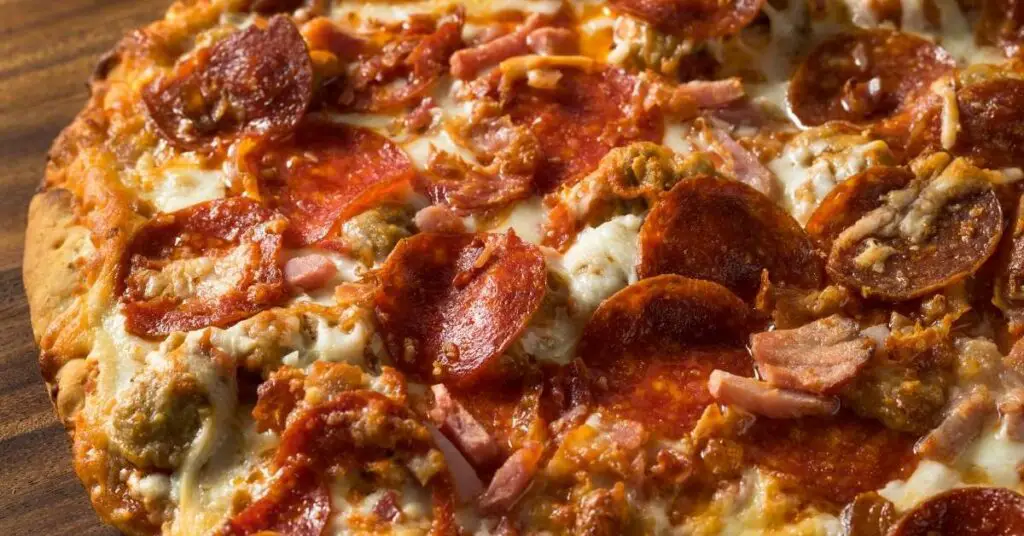
While not all of the ingredients listed above are necessarily “unhealthy” (though many are), they add unnecessary bloat to what should be a simple recipe. They also make it difficult to pinpoint which individual ingredient might be causing you trouble if you end up feeling sick afterwards.
But ingredients aside, let’s look at a typical Domino’s pizza from a nutritional standpoint. The following is the nutritional breakdown for a large 14″ cheese pizza:
| Calories | 2725 |
| Total Carbs | 281.6 grams |
| Net Carbs | 270.9 grams |
| Sugar | 16.7 gram |
| Protein | 134.4 grams |
| Total Fat | 115.8 grams |
| Saturated Fat | 52.1 grams |
| Glycemic Load | High |
| Sodium | 5720 mg |
By contrast, here is the nutritional breakdown for a typical 12″ Neapolitan style pizza:
| Calories | 1044 |
| Total Carbs | 138 grams |
| Net Carbs | 125 grams |
| Sugar | 7 grams |
| Protein | 41 grams |
| Total Fat | 34.8 grams |
| Saturated Fat | 13.8 grams |
| Glycemic Load | Low |
| Sodium | 2586 mg |
As you can see from the chart above, the Neapolitan pizza has way less carbs, saturated fat and sodium—as well as a much lower glycemic load.
Some of this is due to the Neapolitan pizza being slightly smaller in diameter, but the bulk of it is down to the Domino’s pizza being pumped full of additives and low quality ingredients.
Neapolitan Pizza Has Subtler Flavors
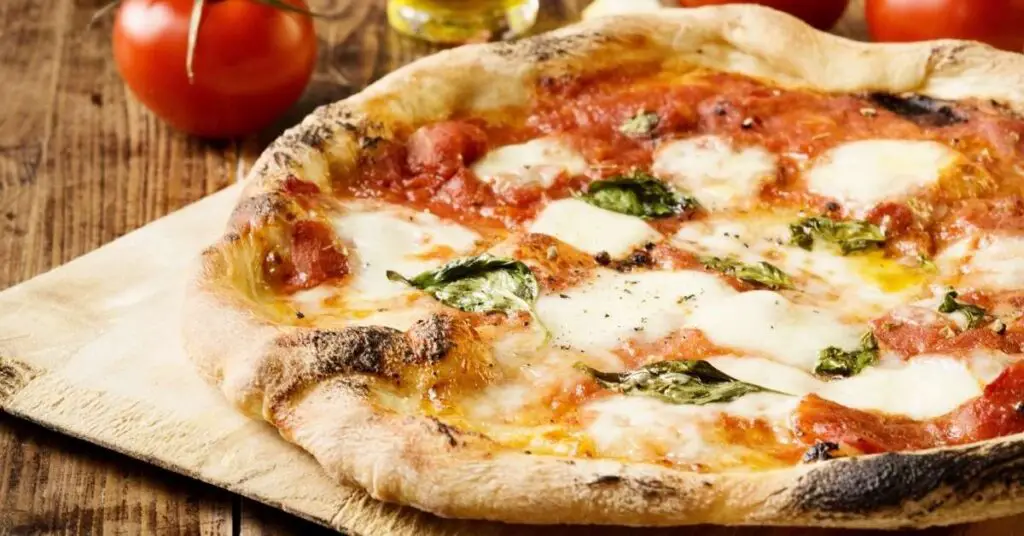
If the only pizza you’ve ever had is from major international chains, like Domino’s or Pizza Hut, and cheap local pizzerias, Neapolitan pizza might take some getting used to.
People who have Neapolitan pizza for the first time often complain that it’s “too bland” or “plain” tasting. Of course, everyone has their own personal tastes, but a lot of this has to do with people getting used to all the extra salt and sugar in unhealthy pizza.
In essence, Domino’s pizza (and the like) is junk food, while Neapolitan style pizza “real food”. And as many of us know, making the transition from the former to the latter can be difficult.
That said, Neapolitan pizza is absolutely delicious—there’s a reason why it’s considered an “Intangible Cultural Heritage” by UNESCO.
If you’re someone who feels they can’t do without highly processed, over-seasoned chain pizza, I encourage you to give Neapolitan style another try. It’s the only truly guilt-free way to enjoy pizza almost as often as you like.
Related Post: What Is Neapolitan Pizza?
What Are The Main Nutrient Benefits In Pizza?
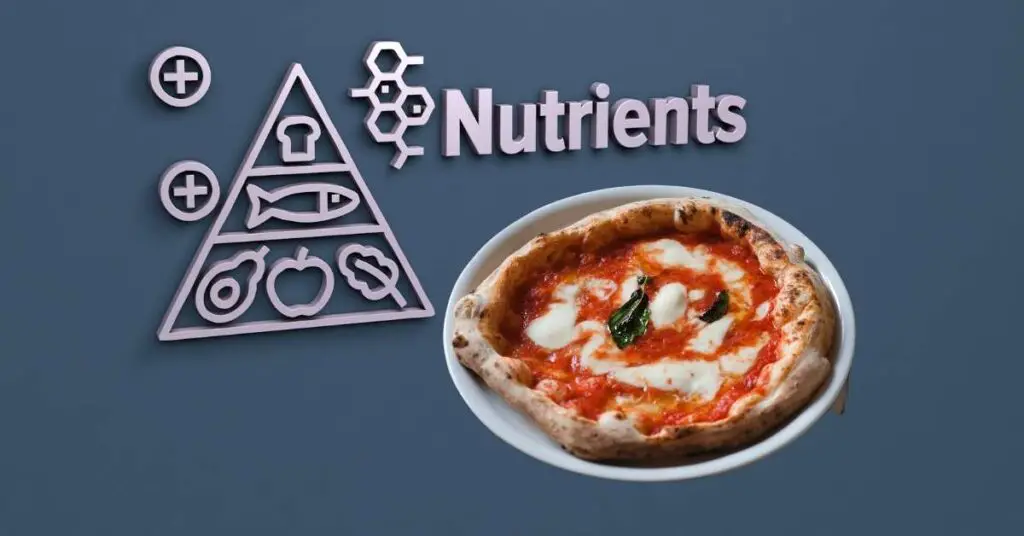
Pizza can be loaded with nutrients, depending on what kind of pizza you’re talking about. The main nutritional benefits come from the choice of sauce, cheese, seasonings, and other toppings. If those toppings are of a low quality, the nutritional benefits will be low as well.
So, for the sake of argument, lets assume we’re talking about a simple, clean, pizza—Neapolitan or otherwise.
Fresh Mozzarella
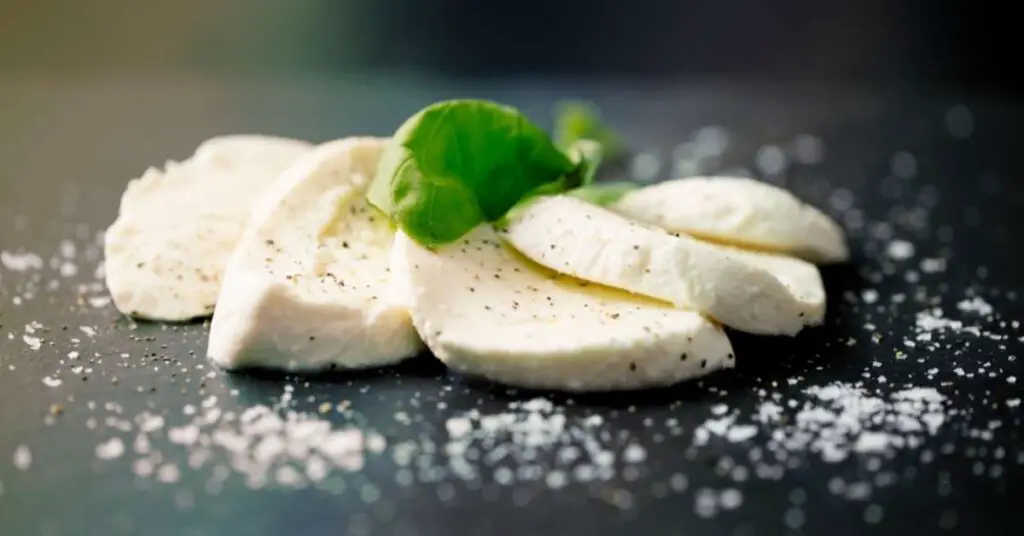
Fresh mozzarella is essentially milk with a touch of salt and citric acid added during the production process. That means most of the health benefits in milk will be present in fresh mozzarella cheese as well. Some of the nutritional benefits of fresh mozzarella include:
- Protein
- Healthy fats
- Calcium
- Phosphorus
- Selenium
- Zinc
- Vitamin D
- Vitamin E
- Vitamin A
Source: https://www.ncbi.nlm.nih.gov/pmc/articles/PMC5643830
Fresh Tomato Sauce
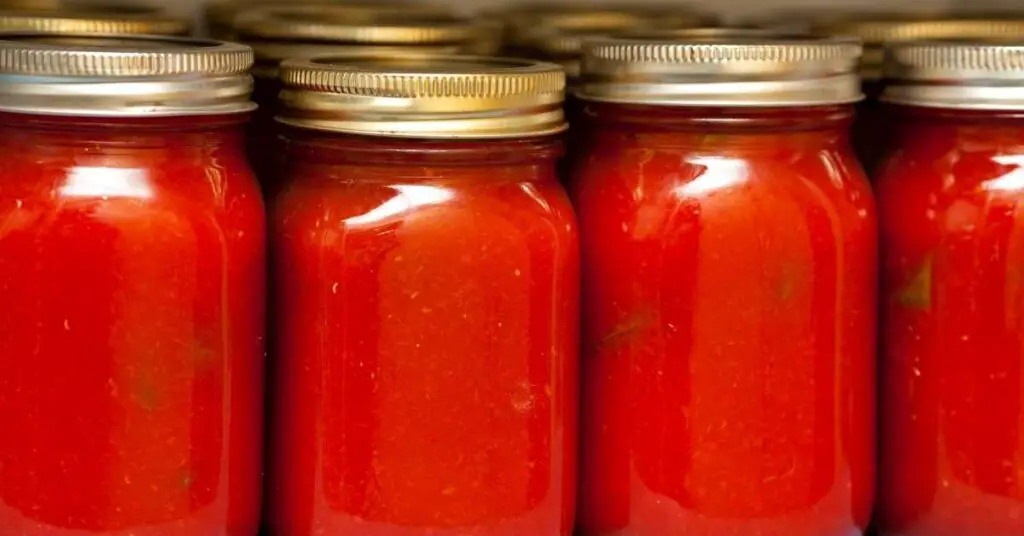
The other significant ingredient in most pizza is tomato sauce. Assuming your tomato sauce is made from 100% tomatoes, some of its nutritional benefits will include:
- Vitamin C
- Vitamin B-complex
- Vitamin A
- Vitamin E
- Vitamin K
- Folate
- Essential amino acids
- Fatty acids
- Abundant antioxidants
Source: https://www.ncbi.nlm.nih.gov/pmc/articles/PMC7823427
Fresh Basil

If your pizza includes fresh basil (which it often does), you can expect even more nutritional benefits:
- Carotene
- Vitamins B1, B2, B3
- Vitamin C
- Calcium
- Phosphorous
- Iron
- Polyphenols
- Essential oils
Source: https://www.ncbi.nlm.nih.gov/pmc/articles/PMC6838276
Extra Virgin Olive Oil
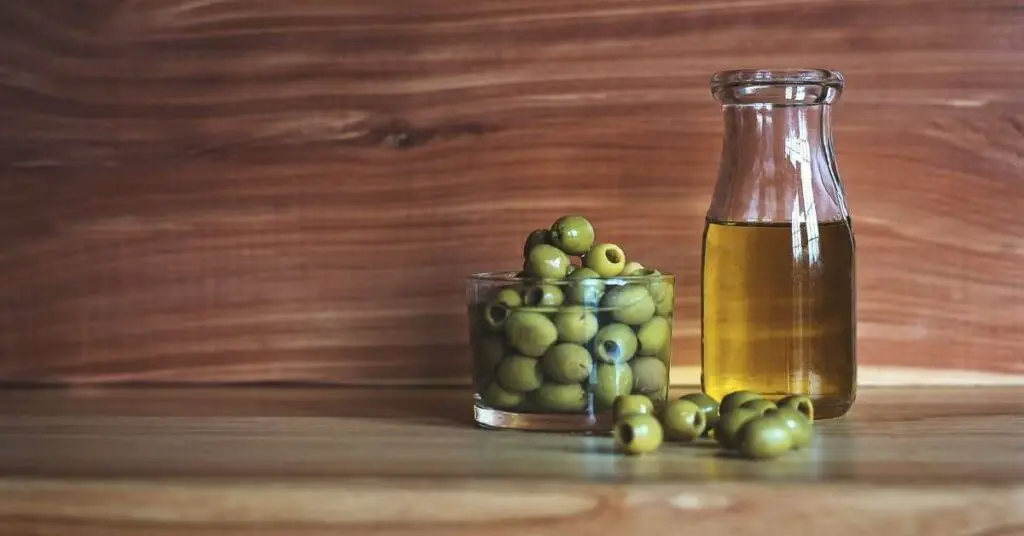
Another staple ingredient of pizza is extra virgin olive oil, which is also densely packed with even more nutrients.
- Mono Unsaturated Fatty acids
- Essential amino acids
- polyphenols
- Vitamin E
Source: https://www.ncbi.nlm.nih.gov/pmc/articles/PMC6770508/
And all of these nutritional health benefits assume you’re just having a plain margherita pizza with just sauce and cheese. By simply adding one or two more simple toppings (like vegetables or lean meats), you can make your pizza even more nutritious.
The key, of course, is moderation, so as long as you’re not overeating pizza, or overeating in general then eating a pizza, you should be fine.
Is Gluten Bad For You?
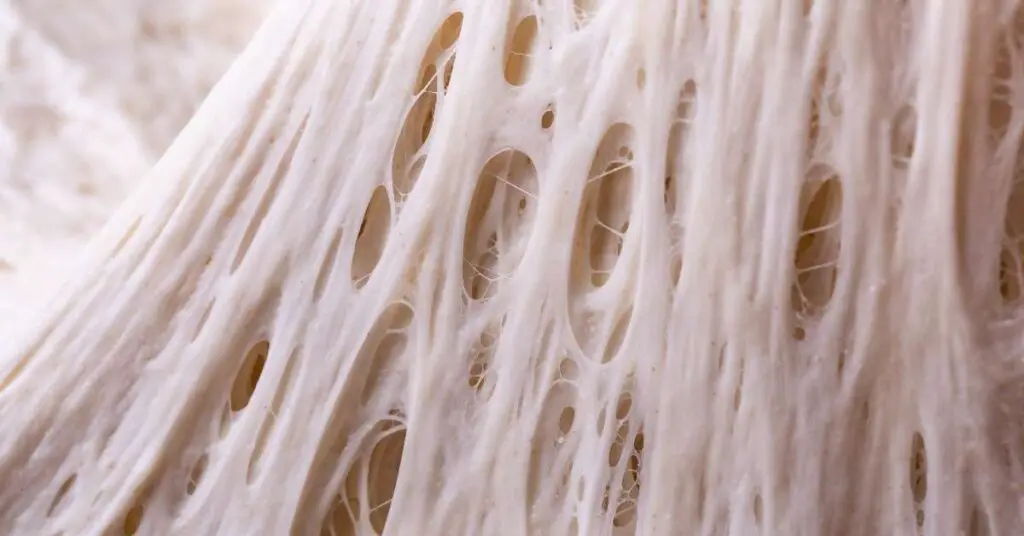
Gluten is one of the core nutritional components of pizza dough, in fact it’s what gives pizza crust its characteristically airy and chewy texture. However, there is this idea floating around that gluten is unhealthy. Fortunately, that usually isn’t the case.
For normal, healthy people, without celiac disease or another specific gluten intolerance, gluten is perfectly fine. Gluten even comes with its own set of nutritional benefits as well, like fiber, protein, vitamin B, magnesium, and iron (source).
Part of the confusion surrounding gluten comes from the fact that a lot of unhealthy foods, like bread and donuts, have a very high gluten content. But these foods aren’t unhealthy because of gluten, rather they’re unhealthy because of the huge amounts of sugar, fat, and salt that usually accompany them.
On the contrary, a simple pizza dough should only contain water, flour, yeast, salt, and maybe a small amount of honey and oil. Combine this with the fact that Neapolitan pizza dough is usually fermented for 24 hours or more, and you’re left with a nutritious and easily digestible base with which to eat other nutritious ingredients (sauce, cheese, etc.).
Further Reading: The Gluten Lie And Other Myths
Key Takeaways
- Pizza isn’t unhealthy, but highly processed ingredients are
- Fast food, American style pizza is the most unhealthy
- Neapolitan pizza is the cleanest and healthiest form of pizza
- Fresh dough, sauce, and cheese are loaded with nutritional benefits
- Eaten in moderation, pizza can be part of a balanced diet
Related Posts:
- Is Pizza Healthy? | The Surprising Health Benefits Of Pizza
- What Is Neapolitan Pizza?
- Which Mozzarella Cheese Is Best For Pizza? Fresh Mozzarella Explained
- Old World Pepperoni Pizza Recipe
- Poolish Pizza Dough Recipe (Perfect Crust Super Easy)
- Ooni Pizza Ovens: All 6 Models Compared & Reviewed
Related Questions:
Is Pizza Healthy Or Unhealthy?
With such a wide variety of styles to choose from, pizza can range from very healthy to extremely unhealthy. The best way to incorporate pizza into a healthy diet is to go for clean pizza styles (like Neapolitan) and combine it with plenty of vegetables (on the pizza or in a salad).
Is It OK To Eat Pizza Once A Week?
As part of a balanced diet, even unhealthy pizza can be enjoyed in moderation. For this reason, limit trips to places like Domino’s and Pizza Hut to no more than once per week.
Is Pizza Healthy For Losing Weight?
Unhealthy pizza loaded with highly processed cheese and toppings is not good for losing weight. However, other styles of pizza made from clean ingredients and fewer, fresher toppings can be part of a healthy diet resulting in weight loss.
Is Pizza Considered Junk Food
While some pizza, full of preservatives and other highly processed ingredients, is considered junk food, Neapolitan style pizza is clean and healthy. That’s because fast-food style pizza is high in saturated fat, sugar, and carbohydrates, while Neapolitan pizza is nutrient dense and easily digestible.


